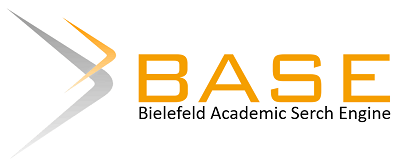Desaign of Caffeate Acid Derivatives for Anticancer based on DFT Molecular Docking
Studi Senyawa Turunan Asam Kafeat sebagai Antikanker: Pendekatan DFT dan Molecular Docking
DOI:
https://doi.org/10.36873/jjms.2023.v5.i1.804Keywords:
Caffeic acid derivatives, B3LYP, Quantum chemical parameters, geometry optimization, anticancer, molecular dockingAbstract
This research informs a descriptive study of caffeic acid derivatives such as ethyl caffeate, fluoro methyl caffeate, chloro methyl caffeate, bromo methyl caffeate, iodo methyl caffeate compounds, using density functional theory in B3LYP method with def2-TZVP basis set. The substitution of various halide atoms in the derivative compounds showed a high increase in chemical reactivity than the methyl group for the main compound by increasing the electron donor ability of the compound in chemical reactions. The molecular structures of some derivative compounds were optimized with geometrical analysis values depicting stable molecular structures with lower HOMO-LUMO energy difference. Quantum chemical parameters such as hardness (η), softness (σ), electronegativity (χ), and electrophilicity (ω) were generated as descriptors for the chemical behavior of the molecules. The FT-IR vibrational frequencies that have been calculated and characterized are in good agreement with the molecular structure. The molecular docking results show that the five ligands are able to interact with amino acid residues similar to the amino acids of the native ligand. The binding energy values for the five native ligands are -6.5, -6.8, -6.6, -6.5, and -6.4 kcal mol-1. Furthermore, binding and interaction values similar to the native ligand, it is expected that the five ligands have potential as anticancer.
Downloads
References
N. Li et al., “Global burden of breast cancer and attributable risk factors in 195 countries and territories, from 1990 to 2017: Results from the Global Burden of Disease Study 2017,” J. Hematol. Oncol., vol. 12, no. 1, pp. 1–12, 2019.
W. H. Organization, “Cancer,” 2022. .
M. Zhang, X. Bai, X. Zeng, J. Liu, F. Liu, and Z. Zhang, “circRNA-miRNA-mRNA in breast cancer,” Clin. Chim. Acta, vol. 523, pp. 120–130, Dec. 2021.
H. Sukiman, “Tikus Sebagai Penghasil Zat Antimikroba Dan,” pp. 27–34, 2016.
Y. M. Chiang et al., “Ethyl caffeate suppresses NF-κB activation and its downstream inflammatory mediators, iNOS, COX-2, and PGE 2 in vitro or in mouse skin,” Br. J. Pharmacol., vol. 146, no. 3, pp. 352–363, 2005.
Y. Nahmias et al., “Apolipoprotein B-dependent hepatitis C virus secretion is inhibited by the grapefruit flavonoid naringenin,” Hepatology, vol. 47, no. 5, pp. 1437–1445, May 2008.
N. Das Prajapati and D. U. Kumar, “Medicinal plants,” Agrobios Publ. company, 3rd Ed. India 353, no. Mi, pp. 5–24, 2003.
X. Zhang, H. Wu, C. Wu, P. Guo, X. Xu, and M. Yang, “Pandanusphenol A and B: Two new phenolic compounds from the fruits of Pandanus tectorius soland,” Rec. Nat. Prod., vol. 7, no. 4, pp. 359–362, 2013.
Y.-Z. Zheng, G. Deng, R. Guo, Z.-M. Fu, and D.-F. Chen, “Effects of different ester chains on the antioxidant activity of caffeic acid,” Bioorg. Chem., vol. 105, p. 104341, Dec. 2020.
M. Ariefin and M. H. Pasaribu, “Theoritical Studies of Corossion Inhibition of Coumarin and Coumarin Derivative on Iron by Density Functional Theory Approaches,” Al-Kimia, vol. 11, no. 1, Jun. 2023.
J. Li, A. Fu, and L. Zhang, “An Overview of Scoring Functions Used for Protein–Ligand Interactions in Molecular Docking,” Interdiscip. Sci. – Comput. Life Sci., vol. 11, no. 2, pp. 320–328, 2019.
L. G. Ferreira, R. N. Dos Santos, G. Oliva, and A. D. Andricopulo, Molecular docking and structure-based drug design strategies, vol. 20, no. 7. 2015.
M. H. Pasaribu, I. M. Arcana, and D. Wahyuningrum, “Synthesis and characterization of ionic liquid (EMImBF4)/Li+ - chitosan membranes for ion battery,” in THE 5TH INTERNATIONAL CONFERENCE ON MATHEMATICS AND NATURAL SCIENCES, 2015, p. 070014.
R. Venkatesh, S. Bose Priyan, and S. Sundararajan, “Assessment of functional group in herbo mineral formulation Sanda Marutha Chendhooram through Fourier Transform Infrared SpectroscopyNo Title,” J. Tradit. Integr. Med., vol. 4, no. 2, pp. 503–506, 2021.
A. M. Deghady, R. K. Hussein, A. G. Alhamzani, and A. Mera, “Density Functional Theory and Molecular Docking Investigations of the Chemical and Antibacterial Activities for 1-(4-Hydroxyphenyl)-3-phenylprop-2-en-1-one,” Molecules, vol. 26, no. 12, p. 3631, Jun. 2021.
W. Mecibah, H. Allal, M. Cherifi, S. Bouasla, and B. Nabila, “THEORETICAL STUDY OF CHALCONE DERIVATIVES AS CORROSION INHIBITORS FOR ALUMINUM IN ACIDIC ENVIRONMENT,” Rev. Roum. Chim., vol. 66, no. 7, pp. 633–644, 2021.
T. Tsuneda, J.-W. Song, S. Suzuki, and K. Hirao, “On Koopmans’ theorem in density functional theory,” J. Chem. Phys., vol. 133, no. 17, p. 174101, Nov. 2010.
L. R. Domingo, E. Chamorro, and P. Pérez, “Understanding the Reactivity of Captodative Ethylenes in Polar Cycloaddition Reactions. A Theoretical Study,” J. Org. Chem., vol. 73, no. 12, pp. 4615–4624, Jun. 2008.
L. Agustina and K. Kasmui, “Studi Komputasi Aktivitas Senyawa Turunan Santon Sebagai Antikanker Leukemia Myeloid Kronik K562,” Indones. J. Math. Nat. Sci., vol. 44, no. 1, pp. 1–11, Apr. 2021.

Downloads
Published
How to Cite
Issue
Section
License
Copyright (c) 2023 Jurnal Jejaring Matematika dan Sains

This work is licensed under a Creative Commons Attribution-NonCommercial-ShareAlike 4.0 International License.
















